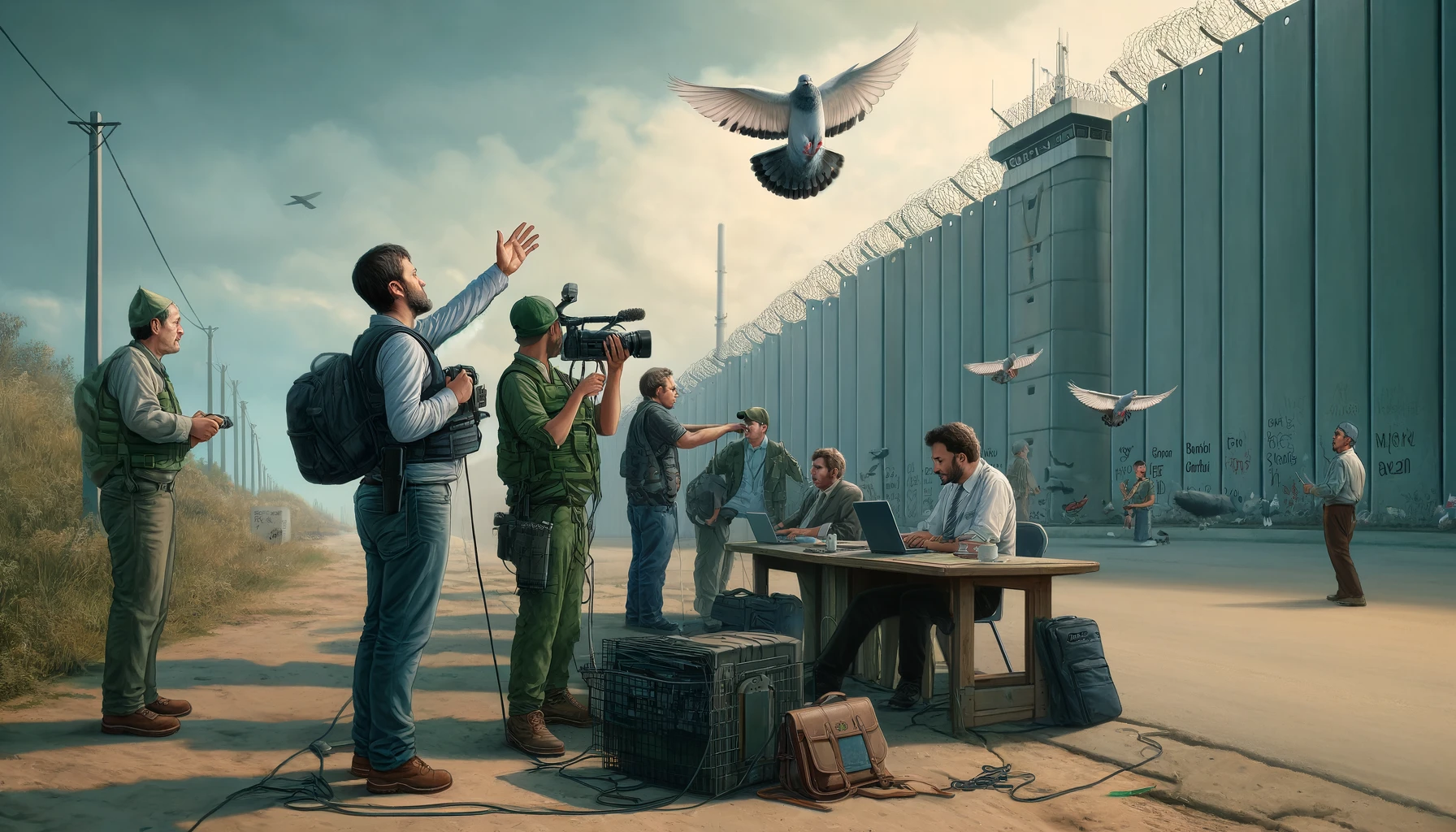In an audacious blend of satire and stark reality that underscores the grim state of press freedom, the notion of media outlets reverting to archaic forms of communication amid ongoing restrictions in Gaza has gained satirical traction. It’s been half a year since the onset of a conflict that has drawn the eyes of the world; yet, independent media is still struggling to penetrate the barriers preventing access to the embattled region.
“Given the extraordinary constraints imposed upon us, we must consider unconventional strategies to maintain a stream of reliable and prompt reporting from Gaza. Embarking on the avian route is indeed one of them,” proclaimed a whimsical Avery Fledgling, the editor-in-chief of the parodic Global News Network. “Our innovation team is fervently working to shrink electronic recording devices to a size that could be fastened to a pigeon. Imagine, integrating vintage communication practices with a dash of present-day technology.”
This tongue-in-cheek proposal has generated a surge of inventive reactions on social media platforms, where netizens offered a smorgasbord of fanciful ideas to bypass the informational cordon. Proposals varied wildly, from an anachronistic revival of message-in-a-bottle techniques, destined to bob along the shoreline of Gaza, to the employment of towering plumes of smoke signals, intricately coded to relay covert dispatches.
Parallel to these satirical exchanges, real journalists perched on Gaza’s outskirts continue their earnest attempts to report, employing everything from high-powered binoculars to sophisticated drones capable of reading lips from a distance. Such endeavors, though resourceful, lay bare the extremity and sheer desperation these circumstances have fostered. “Would you believe that my nuanced knack for decoding Morse code through series of flashlight blinks would become essential in today’s age?” mused a journalist stationed near the boundary, contemplating the myriad obstacles besieging the free press.
Observers and analysts have pointed out the rich irony: resorting to these bygone methods, emblems of simpler times, in an epoch where digital technology affords unprecedented access to information—access that, paradoxically, does not extend to Gaza. “It might seem farcical that we’re contemplating the use of carrier pigeons in 2024,” opined Penelope Quill, a seasoned media analyst. “Yet, in the face of fierce stifling of journalistic freedom, revisiting the relics of the past might illuminate a path forward.”
In the midst of this satirical brainstorming, concerns regarding the ethical treatment of birds have not gone unnoticed. Animal rights advocates have voiced apprehension over the well-being of potential feathered journalists, prompting assurances from the concerned media entities that any avian operatives would be equipped with the most sophisticated GPS devices and miniature parachutes to ensure their safety. “Assuring the welfare of our winged reporters is paramount,” Fledgling assured with a hint of humor.
This satirical narrative, while it provides comic relief, also casts an incisive light on the dire reality facing media access in areas stricken by conflict. The hindrance posed to journalists attempting to document the truth of the situation in Gaza not only stifles the dissemination of news but also alienates the international populace from grasping the scope of the humanitarian crisis unfolding on the ground.
As the world holds its breath for viable solutions to these formidable blockades, the fantastical image of carrier pigeons donning microphones and GPS trackers stands as a striking emblem of journalism’s relentless quest for truth. It is a reminder that, when pressed, humanity’s resolve may just drive us to revive the quaint days of ink, feathers, and beaks to uphold the right to information.

